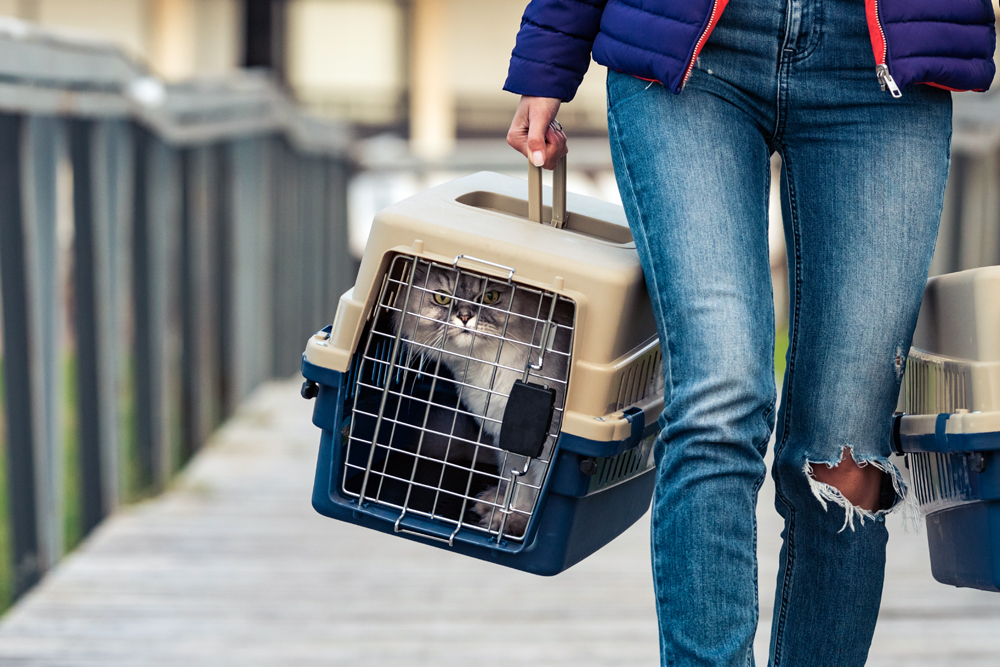In the world of pet ownership, few things matter more than keeping our companions safe. Whether it’s protecting them from food contamination, ensuring their environment is hazard-free, or responding to product recalls, pet safety is a critical issue that affects animals and their human caretakers alike.
In recent years, pet safety has become a significant focus in both veterinary and mainstream media. The result? A wealth of information and news aimed at helping pet owners protect their animals from physical harm, environmental risks, and human error.
But what exactly is pet safety news? And what kinds of updates fall under this category? This article explores the definition of pet safety news and outlines its various categories—each of which plays a role in keeping our furry, feathered, or scaled companions out of harm’s way.
What Is Pet Safety News?
Pet safety news refers to any form of information, reporting, or alert related to the prevention of injury, illness, or danger in domestic animals. It encompasses everything from government-issued product recalls and environmental hazard warnings to educational campaigns and news articles focused on preventing accidents or exposure to toxins.
This type of news is often published by:
-
Veterinary organizations
-
Government agencies (e.g., FDA, USDA, EPA)
-
Pet product manufacturers
-
Animal advocacy groups
-
News outlets, blogs, and social media
Unlike general pet care or health news, pet safety news focuses specifically on preventing harm and mitigating risks—whether the danger is inside the home, outdoors, in food or products, or due to natural disasters and emergencies.
Timely pet safety news can mean the difference between life and death for a beloved animal, making it an essential aspect of responsible pet ownership and veterinary care.
Why Pet Safety News Matters
The importance of pet safety news cannot be overstated. Pets rely entirely on humans for their protection. They cannot read warning labels, anticipate a food recall, or detect a harmful chemical on the floor. It’s up to pet owners and animal professionals to stay informed and act on the latest safety information.
Key reasons pet safety news matters include:
-
Prevention of accidental poisoning
-
Avoidance of injury from unsafe products
-
Improved response during natural disasters
-
Reduction in pet fatalities from overlooked hazards
-
Increased public awareness of emerging risks
Let’s now explore the core categories of pet safety news and how they impact animal welfare.
Product Recalls and Warnings
Perhaps the most well-known form of pet safety news, product recalls involve removing or warning against items that pose a risk to pets. These can include food, toys, treats, grooming products, collars, leashes, and more.
A recall may be voluntary (issued by a manufacturer) or mandated by an authority like the U.S. Food and Drug Administration (FDA). Common reasons for recalls include:
-
Contamination (e.g., Salmonella, Listeria, aflatoxins)
-
Foreign objects (plastic, metal, etc.)
-
Improper labeling (missing allergens or incorrect dosing)
-
Choking hazards or sharp parts
-
Toxic ingredients
Pet food recalls often make national headlines, especially if pets become ill or die as a result. Staying updated on these alerts helps pet owners remove dangerous items from their homes and avoid purchasing unsafe products.
Seasonal and Environmental Hazards
Many pet safety concerns are seasonal or location-specific, and timely news coverage can help pet owners prepare. For example:
-
Heatstroke warnings during summer heatwaves
-
Antifreeze toxicity warnings in winter
-
Tick and flea infestations during spring and summer
-
Wildfire smoke alerts for pets with respiratory conditions
-
Cold weather exposure risks for short-haired or senior dogs
-
Holiday-specific dangers, such as chocolate or tinsel during Christmas
Pet safety news in this category helps people take proactive steps, such as adjusting walking schedules, using protective gear, or modifying indoor environments to reduce exposure to seasonal threats.
Toxic Foods and Plants
Every year, thousands of pets suffer from ingesting items they shouldn’t. Many of these incidents involve common household foods or plants that owners don’t realize are toxic. Pet safety news helps bridge this knowledge gap.
Examples include:
-
Chocolate, xylitol, grapes, raisins, onions, and alcohol for dogs
-
Lilies, garlic, and essential oils for cats
-
Avocado, caffeine, and macadamia nuts for birds and small mammals
News articles and advisories may appear around holidays, seasonal changes, or after veterinary reports highlight new or overlooked risks. Sharing this information saves lives and prevents emergency vet visits.
Dangerous Toys and Equipment
Not all pet products are created equal. Some items, despite being marketed as safe, may have design flaws or material issues that lead to injuries or fatalities. Pet safety news in this category covers:
-
Toys with detachable or small parts that pose a choking risk
-
Rope toys that unravel and cause intestinal blockages
-
Retractable leashes that snap or cause owner injuries
-
Harnesses or collars linked to neck or tracheal damage
-
Cages or crates with pinching mechanisms or poor ventilation
Articles may include consumer reports, veterinary warnings, and product testing outcomes. This information allows owners to make informed purchases and understand the potential risks before using a product.
Poison Control Alerts
When a rise in accidental poisoning cases is detected, organizations like the ASPCA Animal Poison Control Center or Pet Poison Helpline may issue alerts through news outlets or online platforms.
These poison alerts might focus on:
-
Increased calls due to a specific product, such as weed killer or pest repellent
-
Human medication exposure (e.g., antidepressants, painkillers)
-
Household chemical misuse, such as bleach or ammonia
-
DIY remedies or cleaning solutions gone wrong
This type of news is reactive but vital, prompting swift changes in how pet owners store and use chemicals, medicines, and other substances around animals.
Natural Disaster Preparedness
Natural disasters such as hurricanes, floods, wildfires, and earthquakes often make the headlines—but emergency preparation for pets is sometimes overlooked.
Pet safety news in this category aims to ensure pets are included in evacuation, shelter, and recovery plans. News stories may cover:
-
Pet-friendly emergency shelters
-
Evacuation kit recommendations (food, meds, leashes, ID)
-
Microchipping reminders
-
Tips for calming anxious pets during storms
Veterinarians, local news stations, and animal welfare groups often collaborate on these alerts to help communities protect animals during crises.
Transportation and Travel Safety
Traveling with pets—whether by car, air, or public transit—carries its own set of risks. Pet safety news in this category includes:
-
Airline pet transport rules and incidents
-
Crate safety standards
-
Temperature regulations for cargo holds
-
Pet restraint laws for cars
-
Travel-related illnesses, like motion sickness or heat exhaustion
This information is especially important for long-distance travelers, relocating families, and people using pet transport services. It also helps pet parents understand what rights and risks apply when traveling with animals.
Safety in Veterinary Care and Boarding
Not all safety risks are at home. Sometimes incidents occur in professional settings, such as vet clinics, grooming salons, or boarding facilities. News in this area may focus on:
-
Negligence or malpractice cases
-
Outbreaks of illness in boarding facilities
-
Overuse of sedation in grooming
-
Kennel safety violations or closures
These stories often spark public discussions about oversight, regulations, and best practices. They also help pet owners choose trustworthy providers by exposing red flags and unethical operations.
Safety Campaigns and Awareness Drives
Beyond incident-based reporting, some pet safety news focuses on public education and prevention campaigns. These efforts, often led by nonprofits or government agencies, may include:
-
Pet Fire Safety Day
-
National Animal Poison Prevention Week
-
Pet First Aid Awareness Month
-
Backyard Safety for Pets initiatives
Such news stories help raise awareness of preventable risks and empower pet owners with knowledge. They may also feature expert interviews, downloadable checklists, or community events.
Pet Safety Technology
As technology advances, new tools are emerging that help improve pet safety. News stories in this category often feature:
-
GPS tracking collars and tags
-
Smart feeders that prevent overfeeding or schedule medication
-
Pet cameras for remote monitoring
-
Health monitoring apps with safety alerts
-
Alarms and motion sensors for pet-proofing areas
Technology reviews and product announcements are important forms of pet safety news, helping owners decide which gadgets are worth investing in and how they can be used effectively.
Pet Safety Legislation and Policy Changes
Occasionally, safety news intersects with legal and regulatory issues. Law changes can directly impact how pet owners care for their animals. Examples include:
-
Bans on toxic flea collars or dangerous grooming equipment
-
New standards for pet food labeling and sourcing
-
Animal welfare regulations for pet sales
-
Leash and containment laws
-
Regulations around service animals or emotional support pets
Keeping up with pet safety legislation ensures compliance, supports animal welfare advocacy, and empowers citizens to participate in policy discussions.
Pet Safety News: The Final Word
Pet safety news is a dynamic and essential area of reporting that plays a direct role in keeping animals safe and healthy. From urgent product recalls to seasonal hazards, transportation rules to natural disaster preparedness, pet owners are best equipped to protect their animals when they stay informed.
In a world where pets are increasingly seen as family members, their safety deserves the same attention we give our own. Pet safety news bridges that gap between care and caution, helping pet lovers everywhere make smarter, safer choices every day.
So whether you’re reading headlines about a contaminated treat, following a fire safety campaign, or checking travel guidelines before flying with your dog—know that staying informed is one of the best ways to love and protect your pet.

